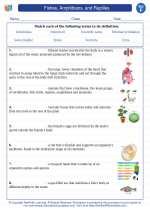Coastal Wetlands
Coastal wetlands are important ecosystems that are found in the transition zone between land and water along the coast. They are characterized by the presence of water, which can be either saltwater, freshwater, or brackish water, and support a wide variety of plant and animal species. Coastal wetlands include mangroves, salt marshes, and freshwater marshes, and they play a crucial role in maintaining the health of coastal ecosystems.
Key Features of Coastal Wetlands
- Hydrology: Coastal wetlands are characterized by the presence of water, which can fluctuate with the tides and seasonal changes. This water is essential for the unique plant and animal life found in these ecosystems.
- Plants: Coastal wetlands are home to a variety of plant species that are adapted to the wet, marshy conditions. These can include mangroves, salt-tolerant grasses, and freshwater plants like cattails and sedges.
- Wildlife: These ecosystems provide important habitat for a diverse array of wildlife, including birds, fish, amphibians, and invertebrates. Many of these species depend on coastal wetlands for nesting, feeding, and shelter.
- Protection: Coastal wetlands act as natural buffers that protect the coast from erosion, storm surges, and flooding. They also help filter pollutants and improve water quality.
Importance of Coastal Wetlands
Coastal wetlands provide numerous ecosystem services that are vital for the health of coastal regions and the planet as a whole. Some of the key reasons why coastal wetlands are important include:
- Biodiversity: These ecosystems support a rich diversity of plant and animal species, many of which are specially adapted to the unique conditions found in coastal wetlands.
- Carbon Sequestration: Coastal wetlands play a significant role in capturing and storing carbon dioxide, helping to mitigate climate change.
- Flood Control: By absorbing and slowing the flow of water, coastal wetlands help reduce the impact of flooding and storm surges.
- Fisheries: Many commercially important fish and shellfish species rely on coastal wetlands for breeding, feeding, and shelter, making them crucial for supporting fisheries.
Threats to Coastal Wetlands
Despite their importance, coastal wetlands are under threat from human activities and environmental changes. Some of the major threats to coastal wetlands include:
- Development: Coastal areas are often targeted for development, leading to the destruction and degradation of wetland habitats.
- Pollution: Runoff from agricultural and urban areas can introduce pollutants and nutrients into coastal wetlands, impacting water quality and ecosystem health.
- Climate Change: Rising sea levels, increased storm intensity, and other impacts of climate change pose significant challenges to the survival of coastal wetlands.
- Overharvesting: Unsustainable fishing and harvesting practices can deplete the populations of species that rely on coastal wetlands for survival.
Study Guide
Use the following study guide to deepen your understanding of coastal wetlands:
- Describe the hydrology of coastal wetlands and explain why water is essential for these ecosystems.
- List and describe three types of plant species commonly found in coastal wetlands, and explain how they are adapted to the wet, marshy conditions.
- Identify at least three wildlife species that depend on coastal wetlands for habitat and explain how they are adapted to this environment.
- Discuss the role of coastal wetlands in protecting the coast from erosion, storm surges, and flooding, and provide examples of how they provide this protection.
- Explain the importance of coastal wetlands in terms of biodiversity, carbon sequestration, flood control, and fisheries, and provide examples to support your explanations.
- Identify and describe at least two major threats to coastal wetlands and explain how each threat impacts the health and survival of these ecosystems.
- Propose and discuss at least two conservation strategies that can help protect and preserve coastal wetlands in the face of the threats they are currently facing.
By studying these key aspects of coastal wetlands, you will gain a deeper understanding of the importance of these ecosystems and the challenges they face in today's world.
.◂Science Worksheets and Study Guides Sixth Grade. Fishes, Amphibians, and Reptiles

 Activity Lesson
Activity Lesson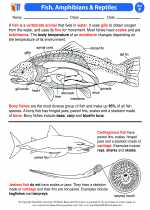
 Worksheet/Answer key
Worksheet/Answer key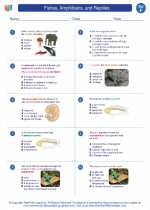
 Worksheet/Answer key
Worksheet/Answer key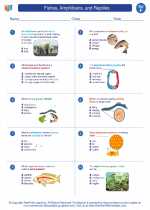
 Worksheet/Answer key
Worksheet/Answer key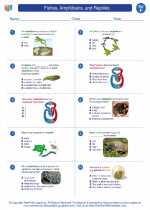
 Worksheet/Answer key
Worksheet/Answer key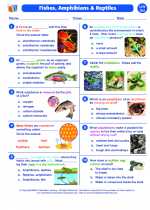
 Vocabulary/Answer key
Vocabulary/Answer key
 Vocabulary/Answer key
Vocabulary/Answer key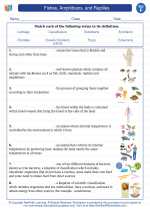
 Vocabulary/Answer key
Vocabulary/Answer key
 Vocabulary/Answer key
Vocabulary/Answer key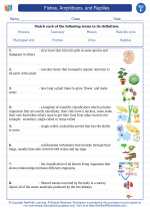
 Vocabulary/Answer key
Vocabulary/Answer key